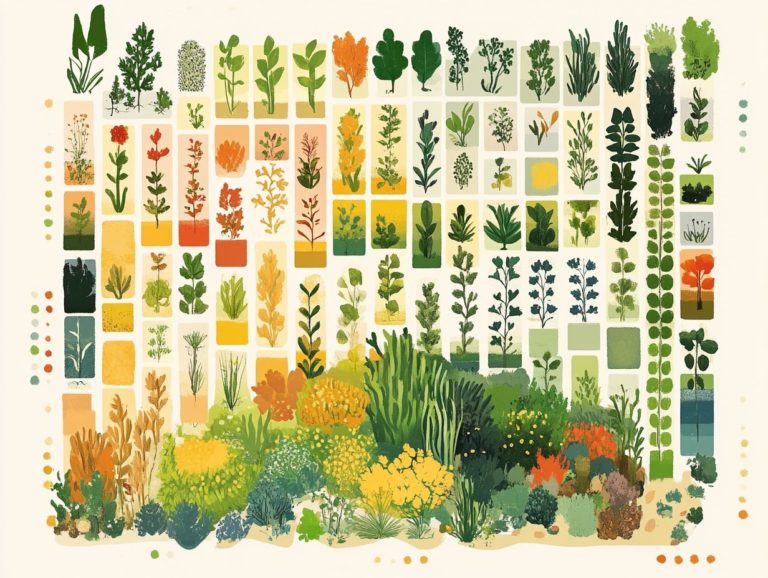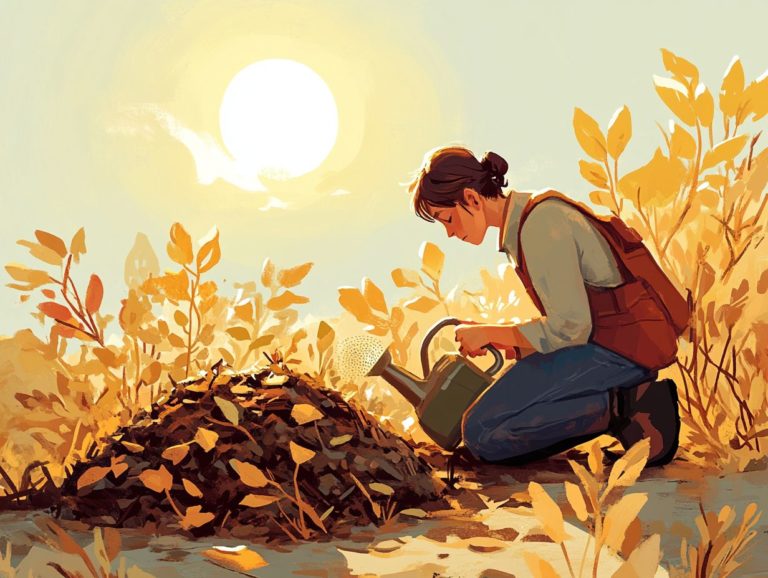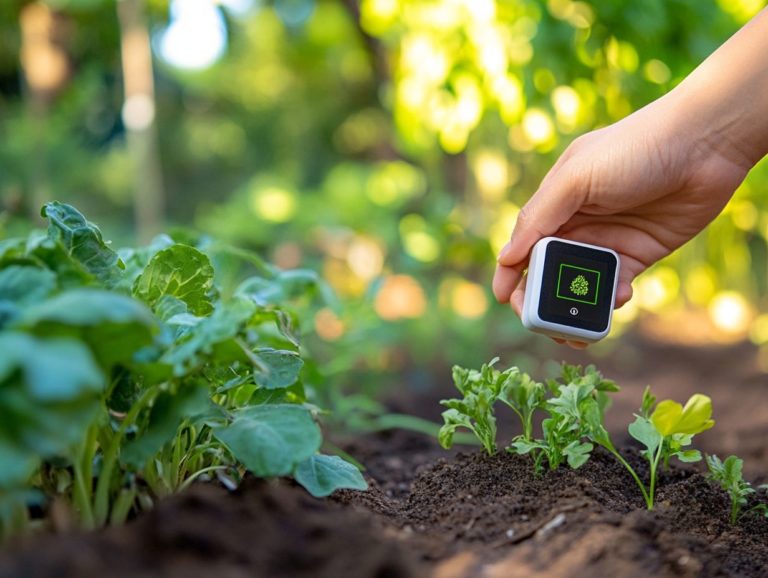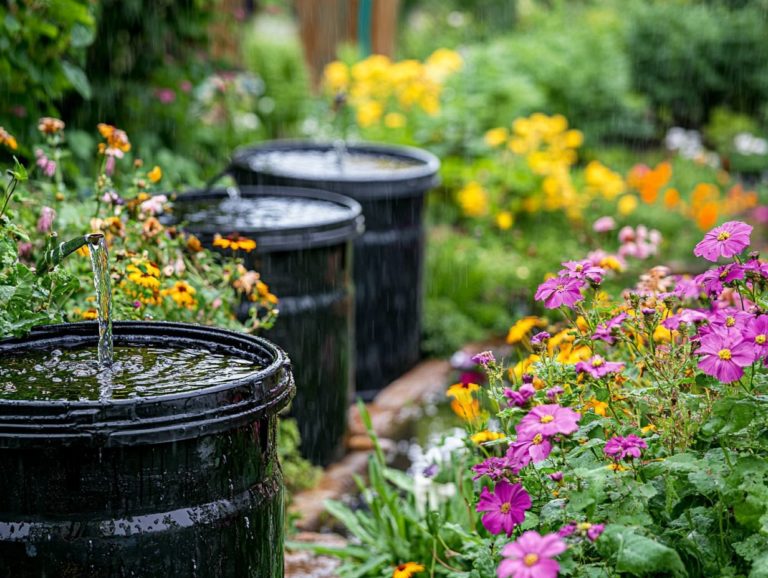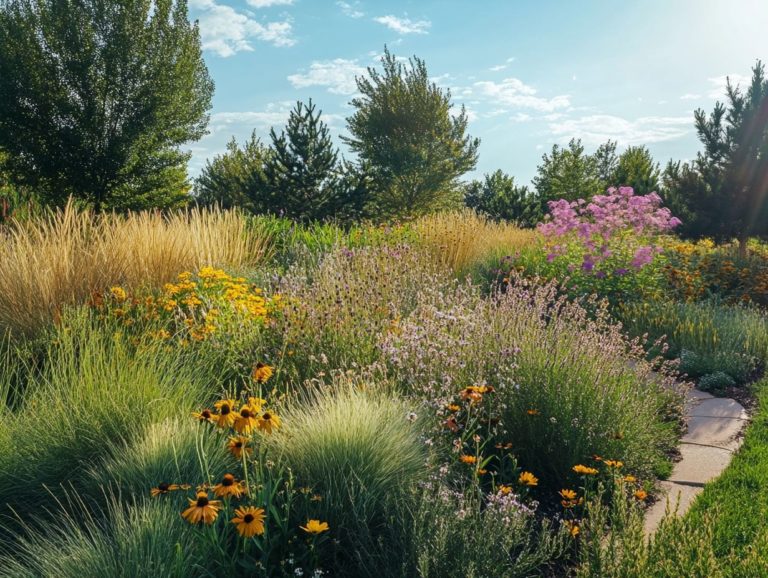Drought Plant Care Myths Debunked
In a world increasingly impacted by climate change, grasping the nuances of caring for drought-resistant plants has never been more vital. Want a garden that flourishes even in drought?
Many gardeners hold misconceptions about what it truly takes to nurture these resilient plants effectively. This article aims to debunk those common myths surrounding drought plant care while providing you with practical advice on maintenance and watering techniques that work.
Seize the chance to create a garden that thrives even in challenging conditions. Discover how to select the right drought-tolerant plants and uncover tips for maximizing water efficiency in your landscaping.
Contents
- Key Takeaways:
- Common Myths About Drought Plant Care
- Proper Care for Drought-Resistant Plants
- Choosing Drought-Tolerant Plants
- Maximizing Water Efficiency in Landscaping
- Alternative Watering Methods for Drought Plants
- Frequently Asked Questions
- 1. Are succulents the only plants that can survive a drought?
- 2. Should I water my plants more frequently during a drought?
- 3. Can I use greywater to water my plants during a drought?
- 4. Can I rely on mulch alone to keep my plants hydrated during a drought?
- 5. Do all plants need the same amount of water during a drought?
- 6. Is it necessary to completely cut back on fertilizing my plants during a drought?
Key Takeaways:
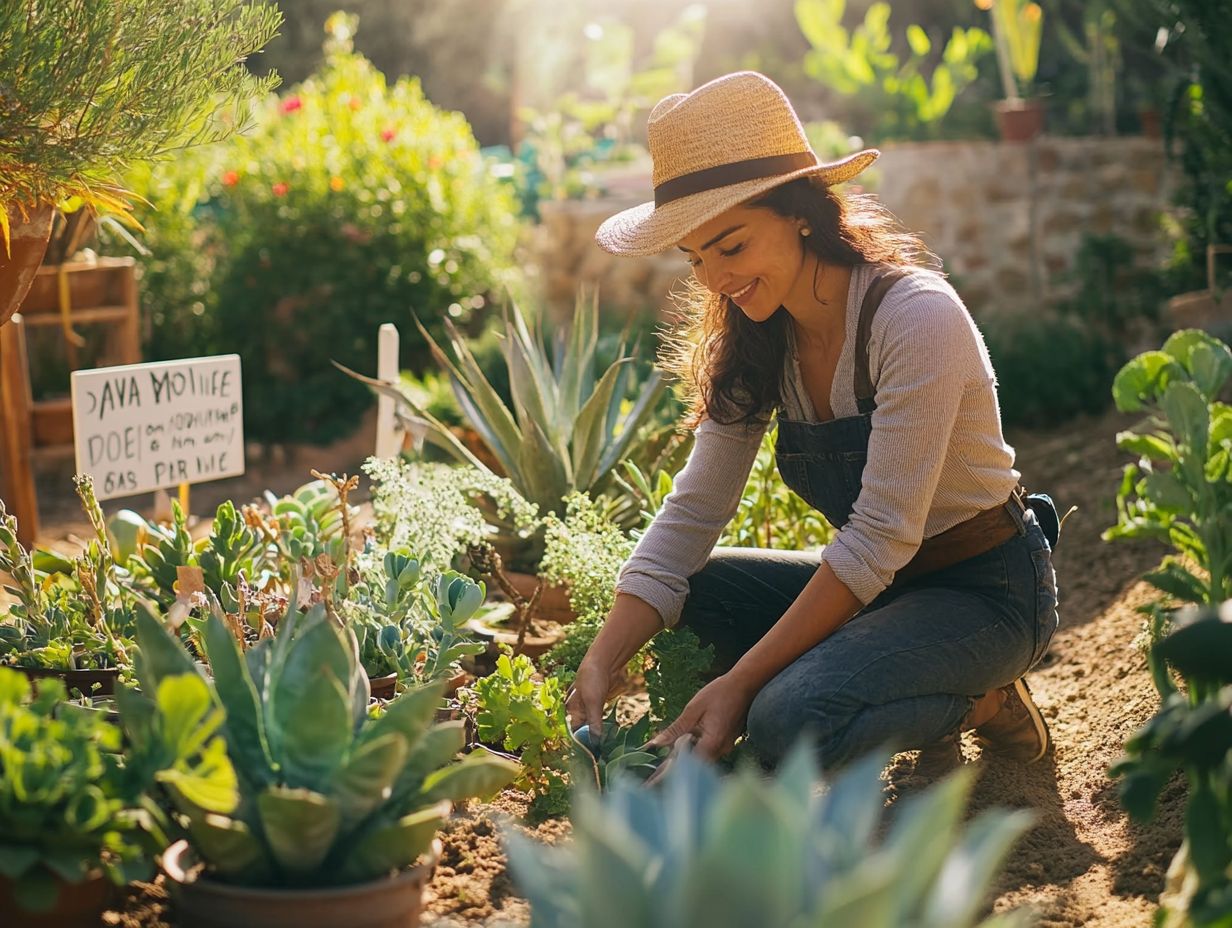
- Drought-resistant plants do not require excessive watering and can thrive with minimal care, debunking the myth that they are difficult to maintain.
- Proper care for drought plants involves choosing suitable species, implementing best watering practices, and maximizing water efficiency in landscaping.
- Alternative watering methods, such as drip irrigation (a method of watering plants slowly over time) and mulching, can help conserve water and support the growth of drought-tolerant plants.
What is Drought Plant Care?
Drought plant care is a vital set of practices designed to keep your plants thriving during tough times when water is scarce and conditions are less than ideal. This specialized approach embraces strategies that enhance soil moisture retention, ensuring your plants stay hydrated and vibrant.
To master effective drought plant care, it s important to understand the specific watering needs of different species. Choose drought-tolerant plants and apply water conservation techniques to enrich soil health, ultimately benefiting the entire garden ecosystem.
By prioritizing soil quality, you can create a robust foundation that supports your plants while nurturing beneficial organisms. Enriching the soil with organic matter enhances its structure and water-holding capacity.
Implementing strategic watering methods, like drip irrigation or deep watering, encourages deeper root growth. This equips your plants to better withstand extended dry spells.
Keeping your plants healthy during drought isn’t just about aesthetics; it has significant ecological advantages, such as preserving habitats for local wildlife and improving air quality. Therefore, proactive drought plant care becomes essential for anyone committed to sustainable gardening.
Common Myths About Drought Plant Care
In the world of gardening, countless myths about drought plant care can create misconceptions that hinder your ability to nurture your plants during dry spells. These misunderstandings often arise from outdated methods or a limited understanding of the specific needs of various plants.
By debunking these gardening myths, you can embrace more informed practices that foster healthy soil. This empowers your plants to thrive even in challenging drought conditions.
Debunking Misconceptions
Debunking misconceptions about drought plant care is vital for gardeners eager to elevate their skills. Many individuals mistakenly think that all plants thrive on the same watering schedule, leading to over or under-watering.
This misstep can significantly jeopardize the health of your plants, particularly during drought conditions. Grasping the unique needs of various species, like hydrangea, astilbe, and hosta, helps craft personalized watering plans for optimal moisture levels.
Take hydrangeas, for instance. They flourish in consistently moist conditions, but too much water can spell disaster, inviting root rot (a condition where roots decay due to excess water). Astilbe enjoys a fair amount of water yet can tolerate dryness more than you might think.
If not managed properly, it can become stressed or fail to produce blooms. Hosta prefers rich, moist soil but surprises many with its drought tolerance once established.
Misunderstanding these subtleties can lead to stunted growth or, worse, the complete demise of your plants. Thus, cultivating a profound understanding of individual species enhances plant vitality and fosters a thriving garden environment.
What challenges have you faced in caring for drought-resistant plants? Share your thoughts below!
Proper Care for Drought-Resistant Plants
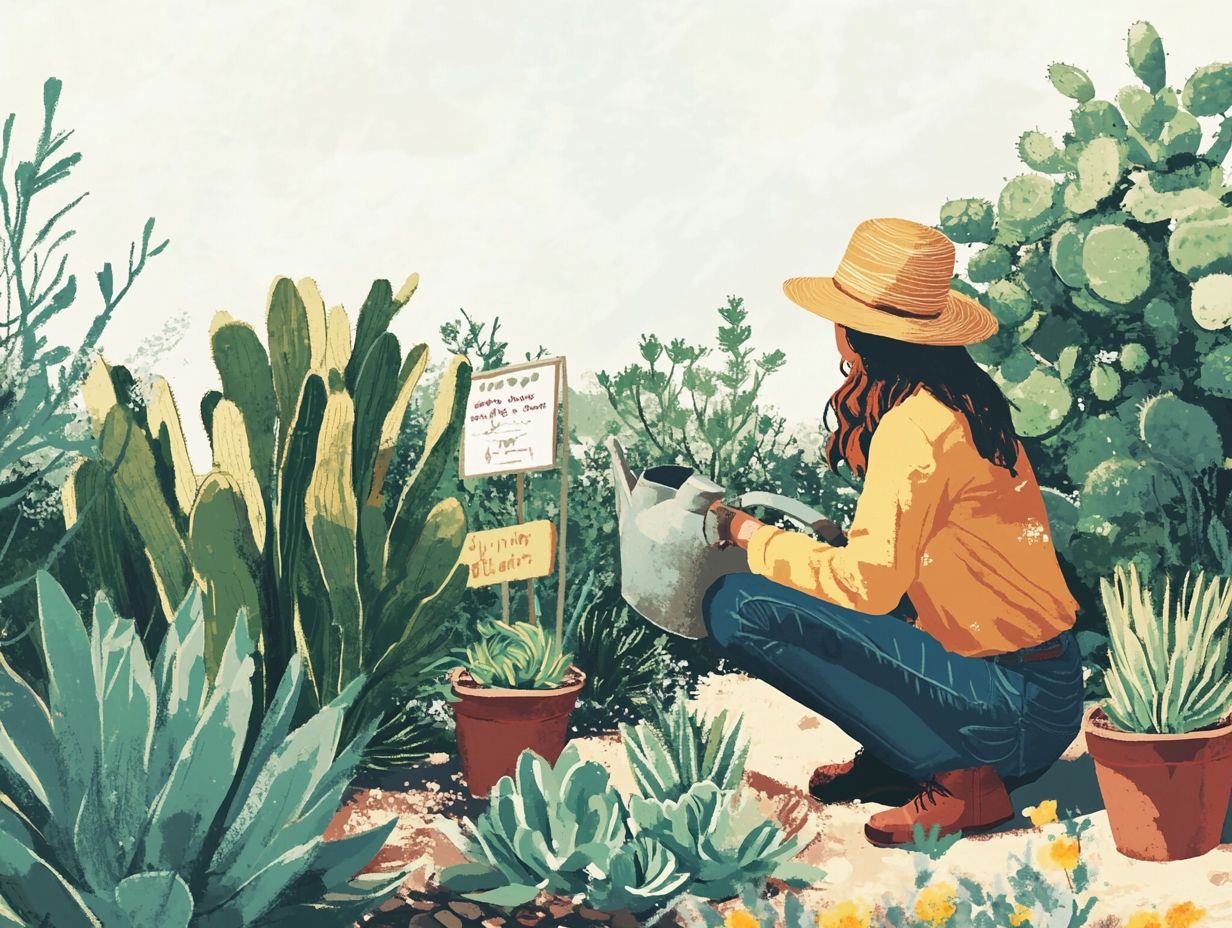
Caring for drought-resistant plants is essential for their resilience and longevity, especially during dry spells. These remarkable plants thrive in arid conditions and require your careful attention to their watering needs and soil health to flourish.
Using techniques like organic mulch to retain moisture and creating a thoughtful watering schedule can significantly enhance the vitality of these species. This approach helps them endure environmental challenges and thrive without sacrificing their growth.
Best Practices for Watering and Maintenance
Implementing effective watering and maintenance is key to keeping your drought-resistant plants healthy, especially in challenging weather conditions. Explore various watering methods, such as drip irrigation, which delivers water directly to the roots, minimizing evaporation and runoff.
Incorporate mulching into your routine; it retains soil moisture and regulates temperature. Understand your irrigation needs based on seasonal weather patterns by monitoring rainfall and adjusting your schedule during dry spells. This balance promotes a healthy soil structure and reduces the risk of overwatering, ensuring the longevity and productivity of your garden.
Choosing Drought-Tolerant Plants
Choosing drought-tolerant plants is a smart way to create a sustainable garden. Native plants not only survive droughts but also help our ecosystem thrive. When assessing which plants to introduce, consider their adaptability to local conditions and specific watering needs. This approach minimizes your irrigation requirements while promoting healthy growth.
Factors to Consider
When selecting drought-tolerant plants, evaluate key factors for a sustainable garden. First, check your soil type; some plants flourish in clay, while others prefer sandy or loamy conditions. The amount of sunlight your planting area receives and each plant’s watering needs will significantly influence which species thrive under drought conditions.
For example, Agave and Sedum are excellent choices if you re considering succulents, as they thrive in poor drainage and sandy soils. Alternatively, Lavender enjoys well-drained, loamy earth and plenty of sunlight.
Consider plants like Russian Sage, which thrives in full sun and well-drained soil, or Ornamental Grasses that adapt well to various soil types and light levels. Evaluating these factors helps you select plants that beautify your outdoor space while promoting water conservation and fostering ecological balance.
Maximizing Water Efficiency in Landscaping
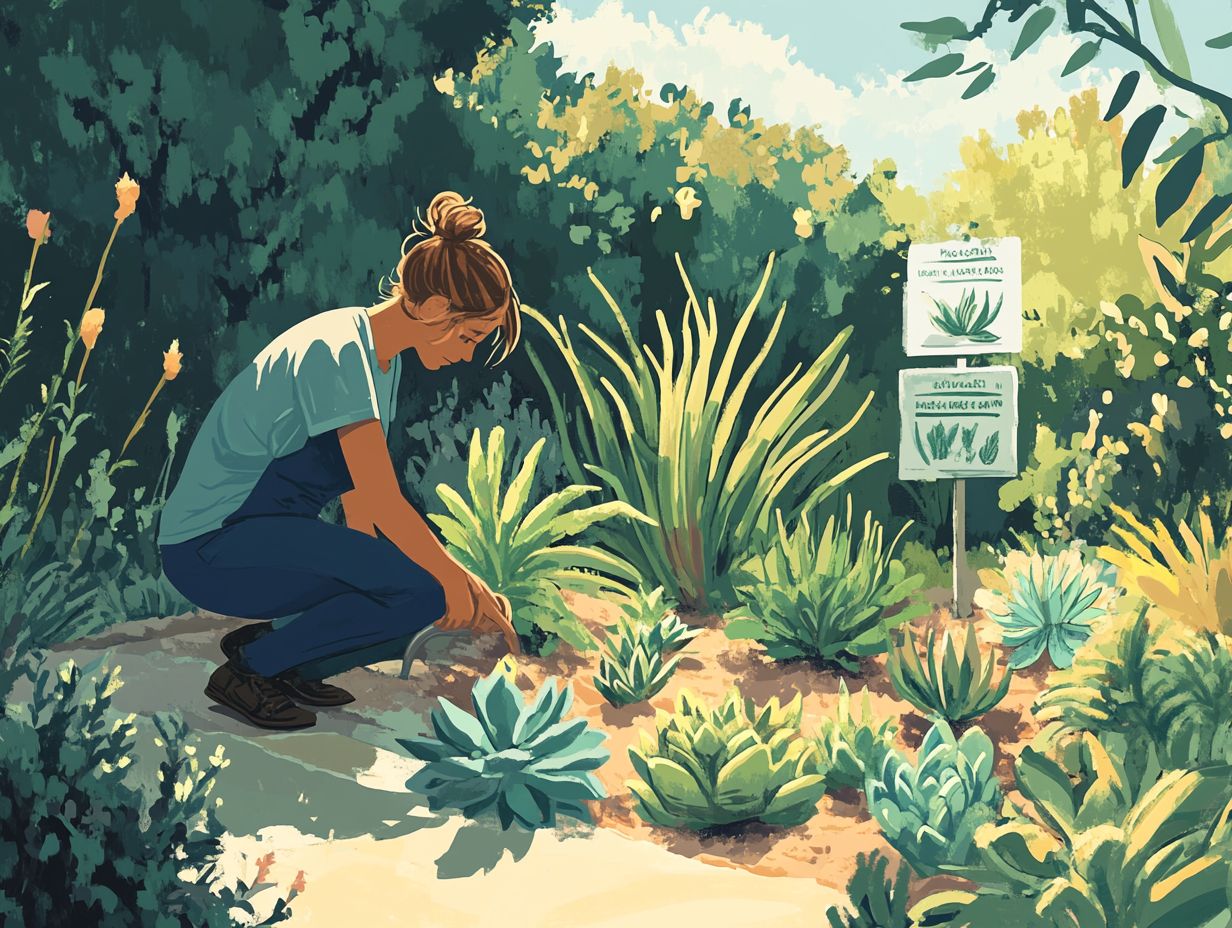
Make your landscaping water-efficient! This not only helps the environment but also keeps your plants healthy, especially in drought-prone areas. By implementing effective irrigation systems designed for optimal water conservation, you can reduce waste while ensuring your plants receive the moisture they need to flourish.
Consider strategies such as:
- drip irrigation
- rainwater harvesting
- the use of organic mulch
These methods improve moisture retention in the soil and help create a resilient and sustainable landscape that adapts to changing environmental conditions.
Tips and Tricks for Saving Water
Implementing effective tips for saving water in your landscaping can significantly enhance sustainability while supporting plant health during dry spells. Simple adjustments, such as mulching with organic materials, watering during the cooler parts of the day, and adding drought-tolerant plants to your garden, can make a big difference in water usage.
Using rain barrels to collect water and setting up a smart irrigation system will boost your conservation efforts and promote the healthy growth of your outdoor plants.
By grouping your plants based on their water needs, you can reduce excess watering and ensure each plant gets the attention it requires. Regular soil testing helps you determine the best watering schedule, allowing for targeted irrigation that supports deeper root growth and improves ability to survive dry conditions.
Incorporating permeable paving materials in your pathways facilitates rainwater absorption, reducing runoff and improving water retention in your garden beds. Together, these practices help create a vibrant garden and contribute to long-term environmental stewardship.
Alternative Watering Methods for Drought Plants
Exploring alternative watering methods for drought-tolerant plants is essential for their health and resilience in challenging conditions. Traditional watering techniques often fall short, especially during prolonged dry spells, making it necessary to consider innovative solutions that maximize moisture retention.
Techniques like deep watering, using drip irrigation (a method where water drips slowly to the roots of plants), and implementing greywater systems will empower your plants to flourish even in tough conditions, ultimately supporting the health of the entire ecosystem.
Exploring Different Techniques
Investigating various techniques for watering drought-tolerant plants can boost their performance and longevity in dry conditions. Methods like soaker hoses, rain gardens, and self-watering containers are increasingly popular among gardeners eager to optimize moisture retention while reducing manual watering tasks.
Soaker hoses deliver water directly to the soil, effectively reducing evaporation. Rain gardens harness natural rainfall and manage runoff, though they can require considerable effort to install. Self-watering containers are ideal for urban settings, but they do require an initial investment.
It’s also crucial to consider climate variability and the specific needs of your plants, such as sunlight and soil type, to ensure optimal moisture distribution. This helps you foster healthier plants while conserving water.
Frequently Asked Questions
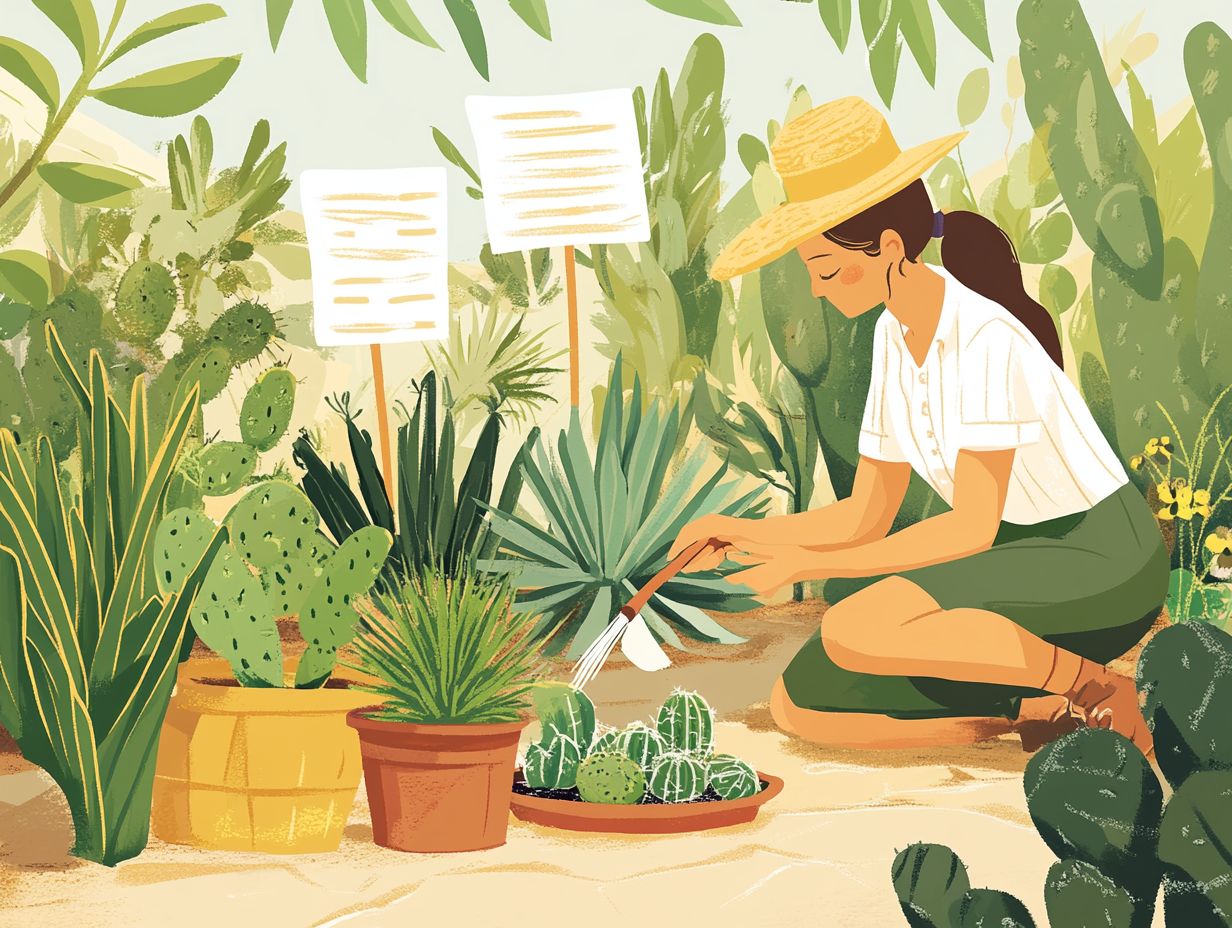
Got questions about drought plants? You’ve come to the right place!
1. Are succulents the only plants that can survive a drought?
No, while succulents are known for storing water and surviving in dry conditions, many other plants are drought-tolerant. Examples include lavender, rosemary, and blanket flower.
2. Should I water my plants more frequently during a drought?
No, this is a common misconception. Overwatering can harm plants during a drought and lead to root rot. It’s important to maintain a regular watering schedule and water deeply but infrequently.
3. Can I use greywater to water my plants during a drought?
Yes, using greywater (water that has been used in sinks, showers, etc.) is a great way to conserve water during a drought. Be sure to use biodegradable and environmentally friendly products to avoid harming your plants.
4. Can I rely on mulch alone to keep my plants hydrated during a drought?
No, while mulch helps retain moisture in the soil, it can’t replace regular watering. It’s important to water your plants deeply and use mulch around them to help keep moisture in.
Start implementing these water-saving techniques today!
5. Do all plants need the same amount of water during a drought?
No, different plants have different water needs. It’s important to research the specific needs of the plants in your garden.
Adjust your watering accordingly during a drought. Native plants and those that survive well with little water need less care than non-native ones.
6. Is it necessary to completely cut back on fertilizing my plants during a drought?
Not necessarily! While you should avoid over-fertilizing, using a slow-release or organic fertilizer can help your plants thrive in dry conditions.
Just remember to follow the instructions carefully to avoid any issues.

